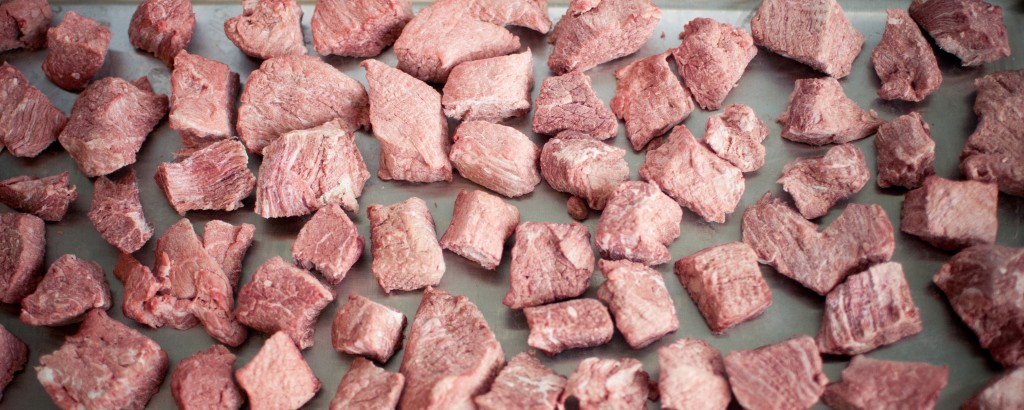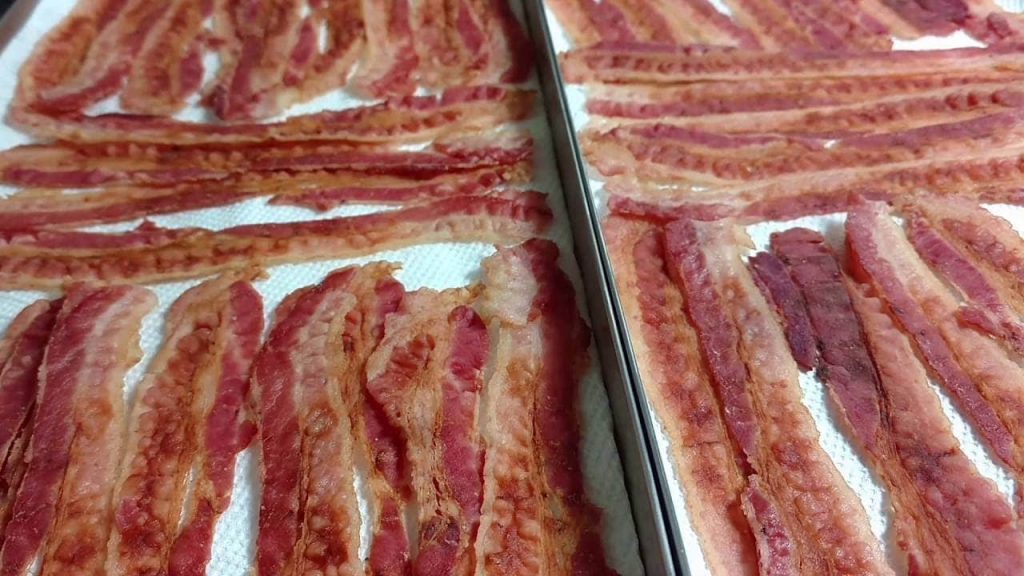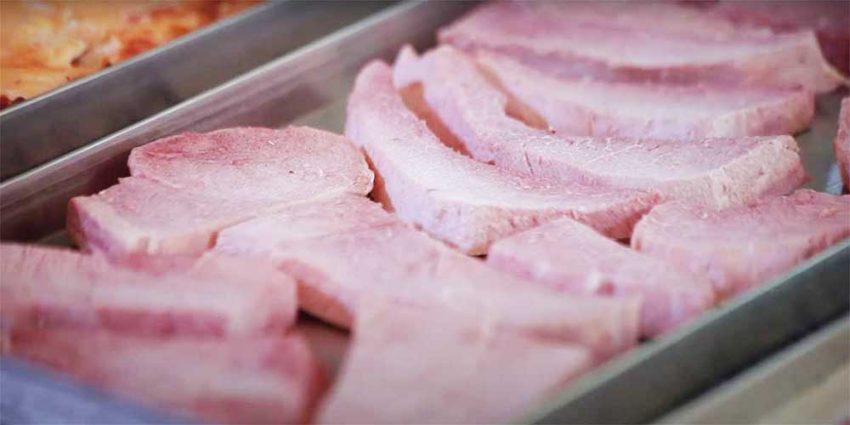Freeze drying is a great way to preserve food for short or long-term use. Meat can be safely freeze-dried using standard freeze-drying steps. Freeze-drying cooked meat is safer than raw meat because it reduces the risk of food-borne diseases contaminating the freeze-drying unit. Meat can be freeze-dried and stored for 6 months to 25 years, depending on the cut.
The ultimate question is how to freeze dry meat and we are sure you will know the answer after reading the information below.
Table of Contents
The Benefits of Freeze-Dried Meat

Some people scoff at the thought of frozen meat. Many people think it tastes bad or is “fake”, however, these are far from the truth. Freeze-dried meat is very beneficial and should be part of any survival kit. If you’re still not convinced, below, you’ll find the main reasons why freeze-dried meat is a great option.
Shelf Life
Frozen meat has a shelf life of up to 25 years. For this reason alone, you can make the argument that freeze-dried meat is the ideal way to survive. Whether you’re camping for a few days or preparing for a hurricane and anticipating a power outage, frozen meat is a great option.
The reason these meats have such a long shelf life is that the manufacturer seals them in the packaging with nitrogen gas. However, once you open your meats, you should be ready to eat them within a few weeks. Experts recommend not waiting more than six months after opening jerky to consume it. The longer you wait, the more likely you are to catch a foodborne illness.
Taste and Nutrition
When you plan for an emergency, you must often limit yourself to non-perishable foods, such as canned foods. But eating beans and vegetables can get old quickly. Also, you may not be providing your body with the proper minerals and nutrients. This is where freeze-dried meat is beneficial.
Freeze-dried meat allows you to eat well-balanced even in the worst of circumstances. You can get protein by eating meat like beef or chicken. This is especially important in stressful situations. When you’re stressed, your body releases cortisol. Cortisol helps speed up protein breakdown.
In an emergency, you are likely to be more stressed than usual. As a result, your cortisol levels may be higher than average, increasing your risk of losing muscle. You never know when you will need power in a survival situation. Having frozen meat on hand is a great way to make sure you’re in the big store when disaster strikes.
Also, consider the fact that having frozen meat on hand can also save you time in a survival setting. If you are in a survival scenario, you will not be able to use the refrigerator or freezer. Also, you may find it difficult to find fresh meat. By having freeze-dried meat on hand, you can reduce the time you spend searching for food, which can become a hassle over time.
Easy to Store
Fresh meat can be bulky and take up a lot of space in your refrigerator or freezer. However, freeze-dried meat takes up far less space, which means you can have more on hand in an emergency. Also, these meats are relatively easy to transport. Frozen meat can lose 90% of your body weight and is ideal for backpacking.
The Disadvantages of Freeze-Dried Meat
While freeze-dried meat has many advantages, there is one fundamental disadvantage worth noting. To hydrate the meat, you need to drink clean water. How serious the problem depends largely on your own living conditions. If you still have running water, this is not a factor. But if you only drink bottled water, this can quickly become a problem.
If your water supply is limited, you may find that drinking water is more beneficial than cooking with it. If you’re camping, there are ways to clean your water, like boiling it. But it takes time, not only to find the water source but also to clean it. In addition, you need to have the ability to make a fire, and in addition, you need to be able to carry a pot that can cook.
How Long Does Freeze-Dried Meat Last?
If the meat is properly freeze-dried and properly stored in a Mylar bag (or airtight container) with an oxygen absorber, it may last up to 25 years depending on the cut, fat content, and other factors. year.
An open package of meat will keep for 6 to 12 months if stored properly. After opening the bag, it is exposed to oxygen and moisture in the air. So it’s important to put a fresh oxygen inhaler into your used bag or container and reseal it to lock in moisture.
We test steaks every 6 months and they have been kept fresh for over 2 years. Almost 3 years later, our ground beef and ground turkey experiments are still fresh and edible.
Steps to Safely Freeze-Dry Meat at Home

Freeze-drying is the perfect option for preserving raw or cooked meat as well as leftover foods that need to be preserved for a long time. Here are some simple steps to follow in order to freeze-dry meat safely.
Freeze-drying is super easy because there aren’t a lot of steps involved, and it is a process that anyone can do.
Step 1: Set up the device
First, plug the freeze dryer itself into the outlet (only the freeze dryer is inserted into the outlet) as this is a high amp machine. Turn on the freeze dryer and let it freeze for at least 30 minutes.
We pre-freeze the freeze dryer to about -80 degrees Fahrenheit.
I recommend doing this step even if you didn’t pre-freeze your food.
Step 2: Ensure that the meat is safe to eat
Most meats are already cleaned during the factory process, so no further cleaning is required. According to the USDA, washing meat just spreads germs all over the place, causing contamination. We don’t wash meat at all.
Pro tip: Be sure to keep your meat out of the “danger zone” where bacteria can grow. This means refrigerating or freezing the meat whenever possible. Obviously, cutting meat in the fridge is weird and dangerous, so you have to take it out.
Step 3: Trim the meat, remove excess fat and all bones
Cut out the meat to be freeze-dried. Fat shortens the storage time of food after freeze-drying. The fatter the meat, the faster the freeze-dried food will rot or spoil. Remove all visible fat that you are comfortable with.
Also, the bonus will not freeze dry, so you will also need to remove any bones attached to the cut.
Step 4: Pre-freeze the meat (optional step)
If you’re a fan of pre-frozen foods that will go into the freeze dryer (we are), now is the time to do so. We have two sets of freeze dryer trays specifically designed to pre-freeze food on freeze dryer trays to save time.
Pre-freezing food can help shorten freeze dryer cycles, as long as you only put food in the freezer machine (so you don’t risk thawing food while the machine is freezing, as that means your food is in the “danger zone”, where it can grow bacteria and make you sick).
Pre-freezing meats also allow your food to be stored safely between cycles.
Step 5: Place the Meat on the Freeze Dryer Tray
Cut raw meat into thin slices or chunks. The cut should not be thicker than about ¾ inch or it will take a long time to freeze dry. They will stick to the top of the tray, which means the tray will not load into the freeze dryer.
Get the tray and place the slices inside; make sure to leave at least ¼ inch (0.64 cm) of space between the slices. Double-check that the meat is higher than the sides of the tray; if so, cut off any pieces that are too large.
Step 6: Insert the Meat (on the Freeze Dryer Tray) into the Freeze Dryer
When ready, insert the tray into the freeze dryer. If you have pre-frozen the freeze dryer, you will need to pause the cycle and release the valve so it can be opened to insert the tray.
If using both cooked and raw meat, place cooked meat on top of raw meat to be on the safe side. This way, if there is dripping water, the raw meat won’t contaminate the cooked meat underneath. It will only contaminate other raw meat (which may already be) or the machine itself.
Step 7: Let the Freeze Dryer Work Its Magic
Once the food is in place, set the freeze dryer to start and close the valve.
Place the door gasket, then close and lock the door so it is sealed. Then let the machine freeze dry for 24-36 hours. Fatter, moister meat will take longer to freeze dry.
Step 8: Check Results
After the freeze dryer is over, check to see if the meat is ready. Take a large piece and cut it in half. This is to ensure that there are no more ice crystals in the middle.
If there are ice crystals, put the meat back in the freeze dryer and let it freeze dry again for a cycle or two.
PRO TIP: Always end the freeze dryer on a heating cycle to prevent condensation from accidentally destroying freeze-dried foods.
Step 9: Storing the Meat
When done, immediately place the meat in Mylar bags or airtight containers, then place an oxygen absorber in each container or bag and seal immediately. If you are using a bag, you can seal it twice to make sure it seals properly. You can now proceed with the stored procedure.
How Do You Store Freeze-Dried Meat Safely?
Meat should be properly labeled and sealed in an airtight container or bag, preferably Mylar, with an oxygen absorber. Specifically, label the meat as raw or cooked, sliced, and then mark the date it was packaged for storage. Store food in a cool, dry room for optimal safety.
Separate raw and cooked meat. Mixing freeze-dried raw and cooked meats can create cross-contamination, which can lead to future foodborne illnesses.
Store freeze-dried meat in a cool place between 32°F and 75°F. Higher temperatures and sunlight will shorten the shelf life and freshness of any freeze-dried food, including meat.
Safety Tips for Before, During, and After Freeze-Drying Meat
Safety is very important when freeze drying. Make sure everything is properly cleaned before, during, and after freeze-drying.
- Wash hands thoroughly – Always wash hands with warm soapy water for at least 20 seconds before and after handling raw meat.
- Cleaning and Sanitizing – Washing and sanitizing all items used in the freeze-drying process. This includes cutting boards, knives, trays, countertops, and everything that goes well with raw meat.
- Cook all meats before serving – It is very important to cook to the FDA-recommended temperature after the meat is rehydrated. The recommended temperature will kill bacteria that survive the freeze-drying process.
Conclusion
In a survival environment, maintaining health and strength is vital to you. So freeze-dried meat makes sense. They provide protein and other nutrients that are difficult to get through canned foods. However, how much water you need to rehydrate food is a concern, and frozen meat may become useless in the long run.
Maybe consider throwing a few packets of freeze-dried meat into your survival kit. There’s no harm in doing this, as they will last for years as long as they don’t open. It’s good to know that in the event of an emergency, you’ll have supplies on hand. Since they take up so little weight and space, adding them to your survival kit should be a no-brainer.
But in reality, eating meat is only good for survival in the short term. Freeze-dried meat is an ideal survival solution if you’re camping or lose power during a hurricane. But if your subsistence continues for more than a week, access to clean drinking water can become a problem. You don’t want to waste cooking water, so frozen meat may not be suitable for long-term use.

